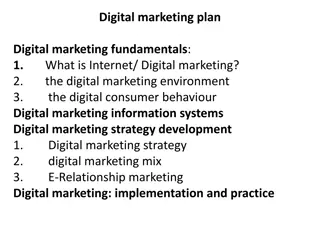
Micro to Macro: The Building Blocks of Life
DNA, proteins, and cell membranes are just the beginning. Dive into the intricate world of life's composition, from inorganic elements to essential and non-essential compounds. Discover the critical role of water, the importance of calcium for bones and blood coagulation, and how diseases like Hypocalcaemia can impact the nervous system. Explore the sources, functions, and diseases related to elements essential for life processes. Uncover the interplay between micro and macro molecules in the creation and sustenance of life forms.
Download Presentation

Please find below an Image/Link to download the presentation.
The content on the website is provided AS IS for your information and personal use only. It may not be sold, licensed, or shared on other websites without obtaining consent from the author. If you encounter any issues during the download, it is possible that the publisher has removed the file from their server.
You are allowed to download the files provided on this website for personal or commercial use, subject to the condition that they are used lawfully. All files are the property of their respective owners.
The content on the website is provided AS IS for your information and personal use only. It may not be sold, licensed, or shared on other websites without obtaining consent from the author.
E N D
Presentation Transcript
Life N, C, O combined with Hydrogen to form ammonia, methane and water These reacted to form micro molecules- amino acids, fatty acids, monosaccharide's, purine etc Micro molecules gave macromolecules- proteins, polysaccharides, lipids, nucleic acids etc
Macro molecules coacervates cell membrane (enclosed with chemical compounds called protoplasm) multi cellular plants/animals
Cell composition Inorganic - 81% Water - Inorganic salts - 1 Organic compounds - 19 Carbohydrates - 1 Lipids - 3.5 Proteins - 12 Nucleotides - 2 Others - 0.5 80
Water 70% of total weight Less for women Amount decreases with age
Elements 29 elements in animal tissue Two types 1) Essential role known 2) Non-essential role unknown
Essential Two types 1) Macro C, H, O, N, Na, K, Ca, Mg, Fe, P, S, Cl 2) Micro Cu, Zn, Co, Mn, Mo, I, F
Non- essential Br, B, Si, Ar, Ni, Al, Pb, Sn, V, Ti
Ca 50-70 kg body weight has 850- 1400g 99% in bones 100mg per 100mL in blood Absorption promoted by Vit-D
Source milk, fish, radish, drumstick, beetroot, mustard 1L cow milk has 1200mg 1L human milk has 300mg Sitaphal- 800mg per one fruit
Importance For bones Coagulation of blood Transmission of impulse from nerve to muscle Excitation of nerves
Diseases Hypocalcaemia low Ca, affects peripheral nerves Hypocalcaemia- high Ca, depression of nervous system
Na 500mg per day To maintain osmotic pressure of body to prevent dehydration Acts as buffer system to maintain PH in extra cellular fluids Maintains blood viscosity
In medieval Europe as headache remedy Controls heart beat Higher amount causes hypertension
S 1-3mg per day Human body has 140g Source- egg yolk, broccoli, cauliflower, radish, onion, garlic
Importance Boosting resistance to disease Regulate blood sugar Prevent aches and pains For forming hair, skin, nails, nose cartilage, pads the joints antibacterial
Diseases Skin disorder Muscle pain Nerve disorder, arthritis Inflammation constipation
Iodine Adult body has 20- 30mg Important for thyroid hormone Source food, water, salt, sea fish, cod liver oil in common salt 1: 10000 Deficiency - goiter
Fe 3- 4 g in body 75% in blood Vit C favours absorption Absorbed as Ferrous
Function Oxygen transfer, in enzymes, for metabolic oxidation
Source Liver, poultry, beef, fish, egg, carrot, apple, banana, orange, cheese, tomato, spinach Disease- Anemia
Conclusion Beware and be aware of chemical for a better life






















